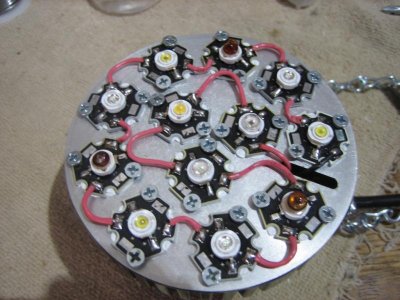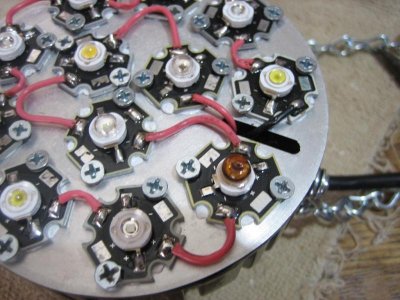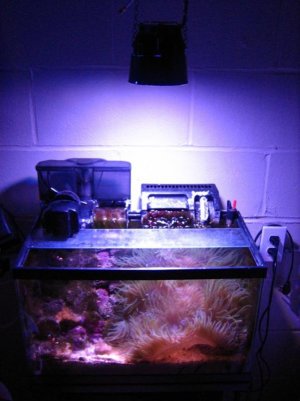This is a question to anyone who has been using Violet 420nm LEDs such as the ones sold by RapidLED. I have the fixture pictured runing on a massive fan cooled heatsink which stays totaly cool to the touch with the fan on and only gets up to 115 degrees with the fan turned off. All LEDs are runing at around 600ma. The fixture has only been up and runing since February 25th.
The violet LEDs have totaly burned up the little optics that come on them and started to brown the secondary Lenses as well. I've read that Bridgelux LEDs should only be ran up to 500ma unless you have a very good heatsink which I do. Now since none of the other LEDs are burning thier optics, (the whites apear to have degraded the phosphor a tad but not damaged the optics), I am leaning towards this not haveing anything to do with heat from the LED and more to do with the near UV Light they emit degrading the plastic.
Thoughts?
Anyone have this happen who is running violets at currents lower than 500ma.
The violet LEDs have totaly burned up the little optics that come on them and started to brown the secondary Lenses as well. I've read that Bridgelux LEDs should only be ran up to 500ma unless you have a very good heatsink which I do. Now since none of the other LEDs are burning thier optics, (the whites apear to have degraded the phosphor a tad but not damaged the optics), I am leaning towards this not haveing anything to do with heat from the LED and more to do with the near UV Light they emit degrading the plastic.
Thoughts?
Anyone have this happen who is running violets at currents lower than 500ma.



